March 31 – April 6, 2024, is Patient Access Week. In healthcare, patient access refers to the ability of patients to access necessary medical care and services. It is a critical aspect of healthcare that directly impacts patient outcomes and experiences.
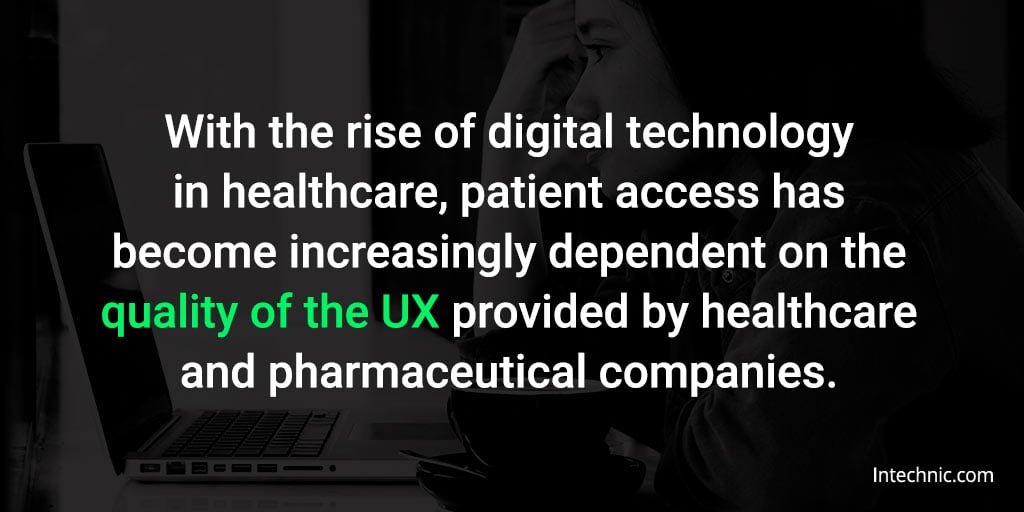
What is UX and why is it important for patient access?
User experience (UX) is the overall experience that a user has when interacting with a product or service. In healthcare, UX refers to the experience patients have when accessing medical care and services through digital platforms or websites, such as telemedicine platforms, patient support programs, electronic health records, secure messaging platforms, and online appointment booking systems.
Healthcare UX is critical to patient access because it directly impacts patients' ability to access the care they need. In today's digital age, healthcare and pharma companies must consider the UX when designing patient access processes.
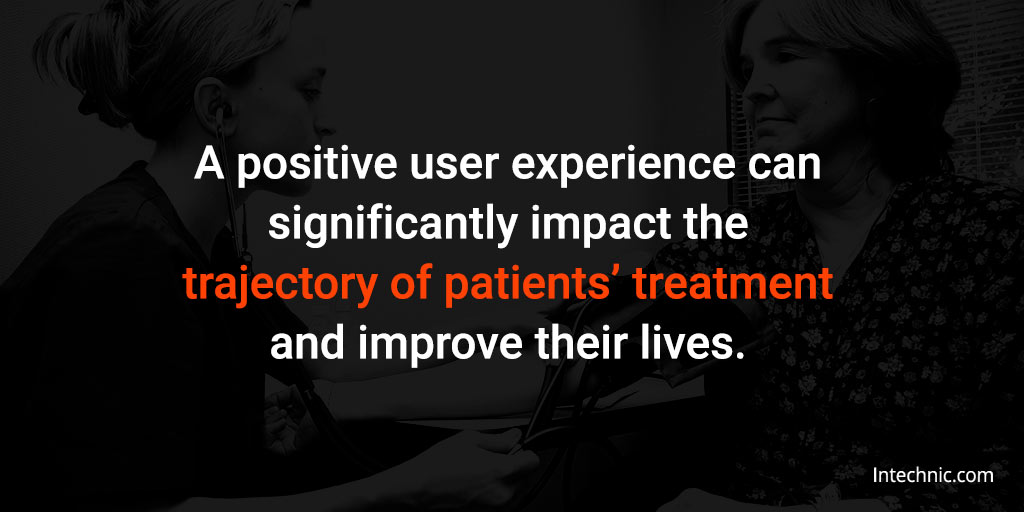
One of the primary benefits of a positive UX is improved patient outcomes. When patients can have convenient remote access to medical care and services through digital products and platforms, they are more likely to receive timely treatment, which can prevent health issues from worsening. Additionally, patients who have a positive experience accessing medical care through digital platforms are more likely to lower their healthcare costs, improve communication with their healthcare professionals, and follow through with their treatment plans, leading to better overall health outcomes.1-4
Improved healthcare UX design can also lead to patient centricity and increased patient satisfaction. Patients who have a good experience accessing medical care through digital platforms are more likely to recommend the service to others and leave positive reviews. This can help healthcare organizations attract new patients and improve their reputation.5,6
A 2020 survey of 1,500 US patients showed that more than 25% switched medical providers because of a poor digital experience. In fact, the number of patients changing providers because of an unsatisfactory digital experience had increased by 40% from the previous year. At the same time, 65% said they would leave a positive online review if the provider offered a great digital experience.6
Overall, UX is critical to patient access in healthcare. By considering UX design principles when developing patient access processes, healthcare and pharma companies can improve patient satisfaction, which can lead to better overall health outcomes and increased patient loyalty.
Healthcare UX principles for patient access
User experience principles have become increasingly important in the healthcare industry and health tech sector, particularly in the context of patient access. Healthcare providers need to provide easy access to patients while ensuring they have a seamless and positive experience.
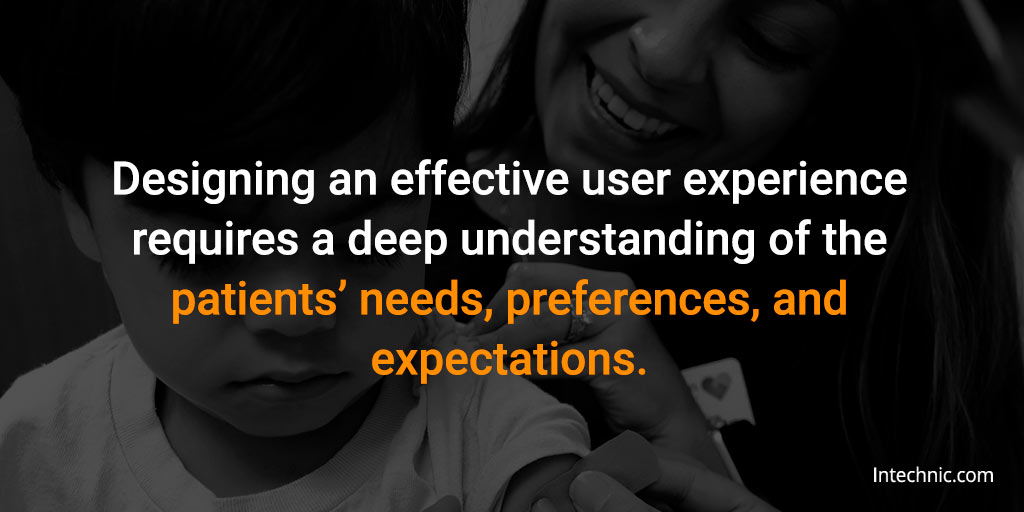
Here are some of the key healthcare UX design principles and explanations of how they apply to patient access.
- A patient-centric approach should always be the focus of UX design for patient access. The design process should start by understanding the patients' needs and preferences, including their technological capabilities and limitations. UX designers should involve patients in the design process to get a better understanding of what they expect from the experience. Patients are the end-users, and their satisfaction and ease of use should be the top priority. The design process should be iterative and involve continuous feedback from patients to ensure that the final product meets their needs.
- Simplicity is essential in UX design for patient access.The healthcare system is complex, so the design should be intuitive, and the language needs to be patient-friendly and easy to understand. It can be tempting to provide patients with all features, resources, and programs, intending to support them better. But the reality is that overloading patients with too much at once can complicate the experience and make it more difficult to use the platform. Instead, designers should focus on simple designs that highlight the most important actions to take, and carefully reveal and make available additional resources when it most makes sense in the patient journey.
- Transparency is crucial in UX design for patient access. Digital services and programs in healthcare and pharma should provide clear information about the process, including what patients can expect, what information they need to provide, and what the healthcare organization will do with the information. Clear communication helps to build trust and confidence in the company providing the service. Patients should be able to understand how the system can help them and what they need to do to complete the process.
UX design principles are critical in designing patient access experiences that are seamless, simple, and trustworthy. A patient-centric approach should be the focus of the design process, and simplicity and transparency should be prioritized. Healthcare UX design needs to ensure patients have a positive experience to improve engagement and satisfaction.
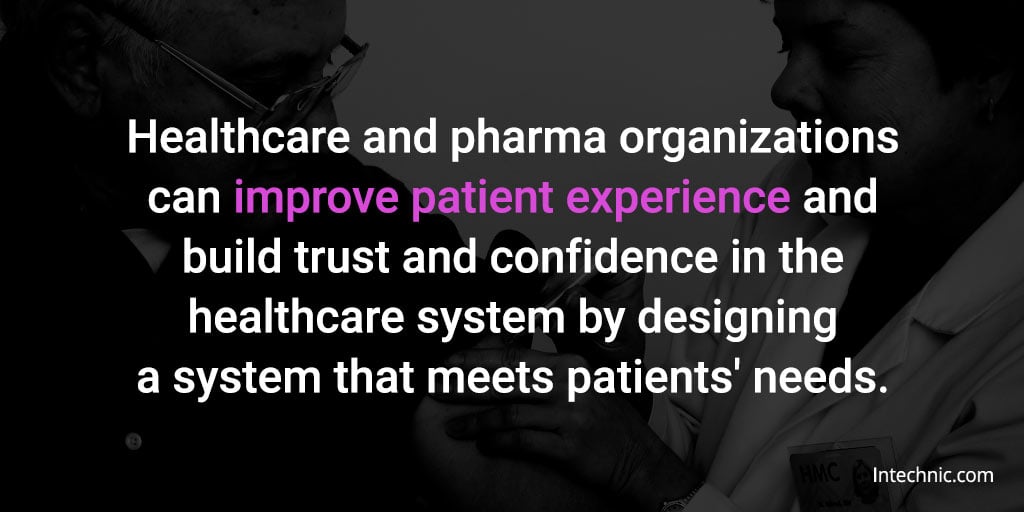
Challenges and opportunities in UX for patient access
While there are significant challenges that must be overcome by healthcare organizations to improve patient access through UX design, there are also numerous opportunities.
Challenges:
- Fragmented experience: One of the significant challenges, especially for larger organizations, is streamlining a multitude of websites, portals, and apps for different healthcare services. Often, patients need to interact with several platforms to find all the resources that they need. Given the complexity of providing various digital healthcare and support services, it may be challenging to create a unified patient experience across multiple medication brands and services.
- Technical complexity: Healthcare systems can be complex, as it needs to accommodate the needs of both healthcare providers and patients. It can be challenging to create a user-friendly interface that works with the existing infrastructure. Additionally, technical constraints may limit what can be done to improve the user experience.
- Regulatory barriers: Healthcare regulations are complex and can limit the scope of innovation and experimentation, making it difficult to design and implement digital healthcare solutions that meet patient needs.
- Resistance to change: Healthcare organizations may be resistant to change, and it can be challenging to get buy-in for UX improvements. It is necessary to demonstrate the benefits of UX improvements and how they positively impact patient outcomes.
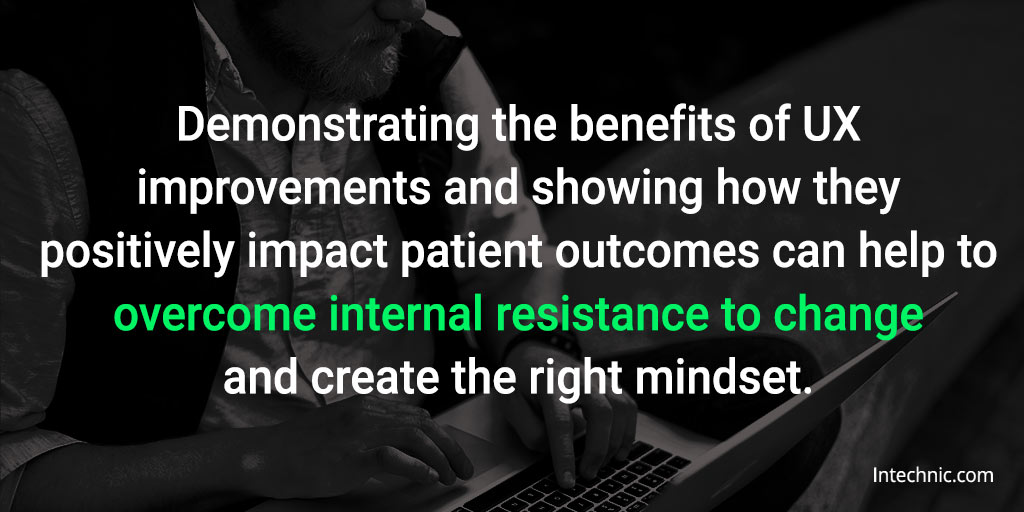
Opportunities
- Demonstrate value through user-centered design: Demonstrating the value of a digital healthcare service or product to the patients is the first step to gaining adoption. Patients need to understand the benefits and advantages of using any service or product before they fully engage with it and become repeat users.
- Utilize patient insights: Prioritizing user research is essential for enhancing patient UX. By gaining a deep understanding of patient requirements and preferences, healthcare and pharma companies can develop solutions that are more effective, efficient, and user-friendly. This, in turn, can help in fostering trust and loyalty leading to improved health outcomes.
- Measure success: Measuring the success of digital products in healthcare and pharma is crucial for improving user experience and making data-driven decisions. Organizations can gage the value of UX improvements by measuring whether they positively impact patient outcomes. Demonstrating the benefits of UX improvements internally can also help to combat resistance to change.
- Find an experienced healthcare UX partner: Working with a company that specializes in healthcare UX can save time and money spent on redesigning a website or a digital product and hoping for an improvement. When it comes to patient UX, it is essential to collaborate with a partner who understands the patients’ unique needs, as well as the business goals and objectives specific to healthcare and pharma organizations.
While there are significant challenges to implementing healthcare UX improvements in patient access, there are also numerous opportunities. Healthcare and pharma organizations that prioritize user-centered design, conduct user-research, measure success, and demonstrate the value of UX improvements are likely to see positive outcomes. By improving the patient experience, healthcare organizations can improve patient access to medical care and services while increasing engagement, building trust, and improving patient outcomes.
References
- McKinsey & Company. www.mckinsey.com/industries/life-sciences/our-insights/the-health-benefits-and-business-potential-of-digital-therapeutics.
- Kinney AP, et al. Effects of Patient Portal Use on Patient Satisfaction: Survey and Partial Least Squares Analysis. J Med Internet Res. 2021; 23(8):e19820.
- Brookings. www.brookings.edu/blog/techtank/2021/10/05/using-digital-health-to-improve-health-outcomes-and-equity.
- Villarin LA, et al. How a digital patient experience can lead to future outcome driven healthcare: thoughts for executive teams. Mhealth. 2023;9:8.
- Snigdha Patel. www.revechat.com/blog/healthcare-customer-experience.
- International Hospital Federation. ihf-fih.org/news-insights/the-impact-of-digital-transformation-on-patient-experience.


